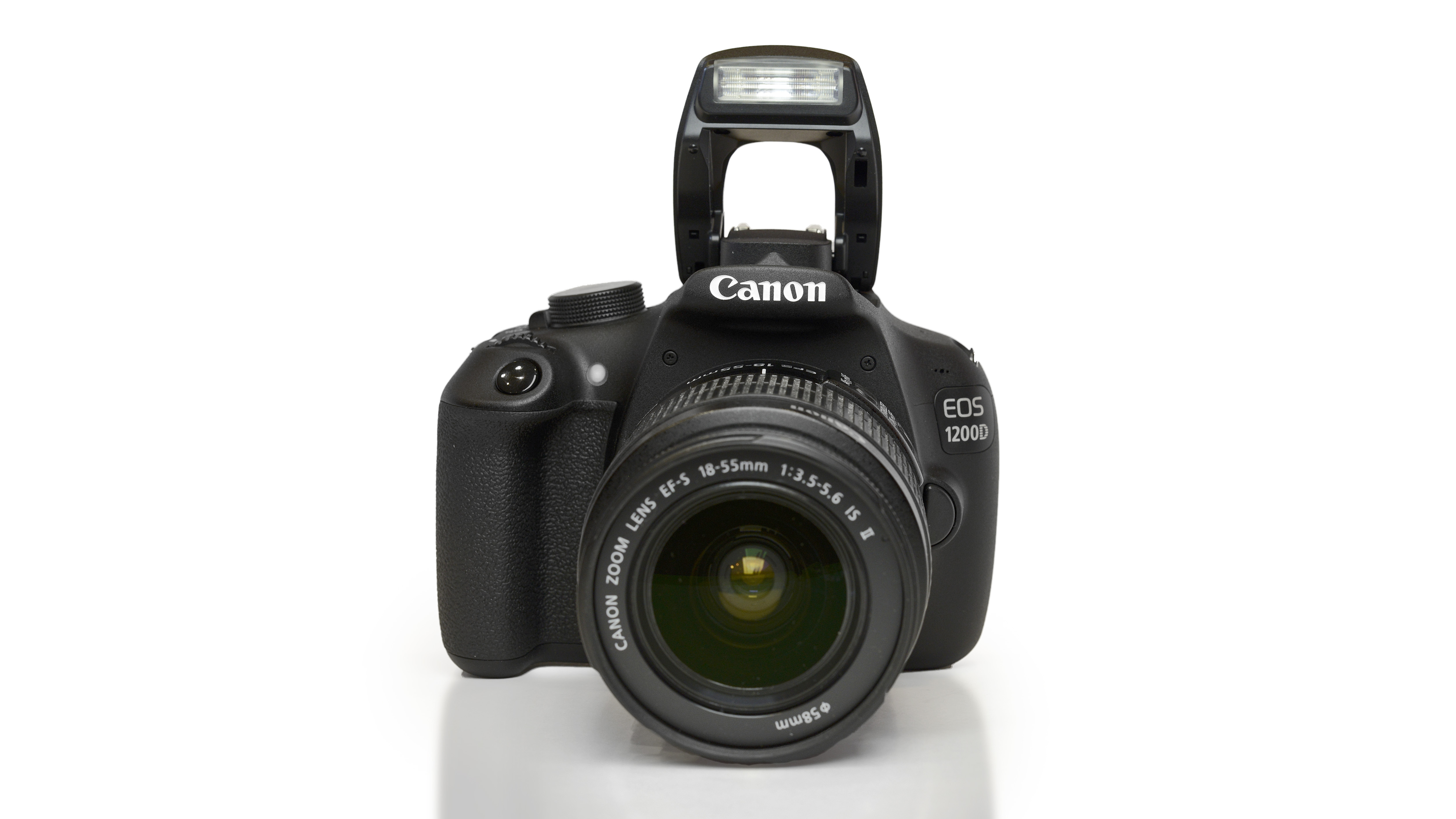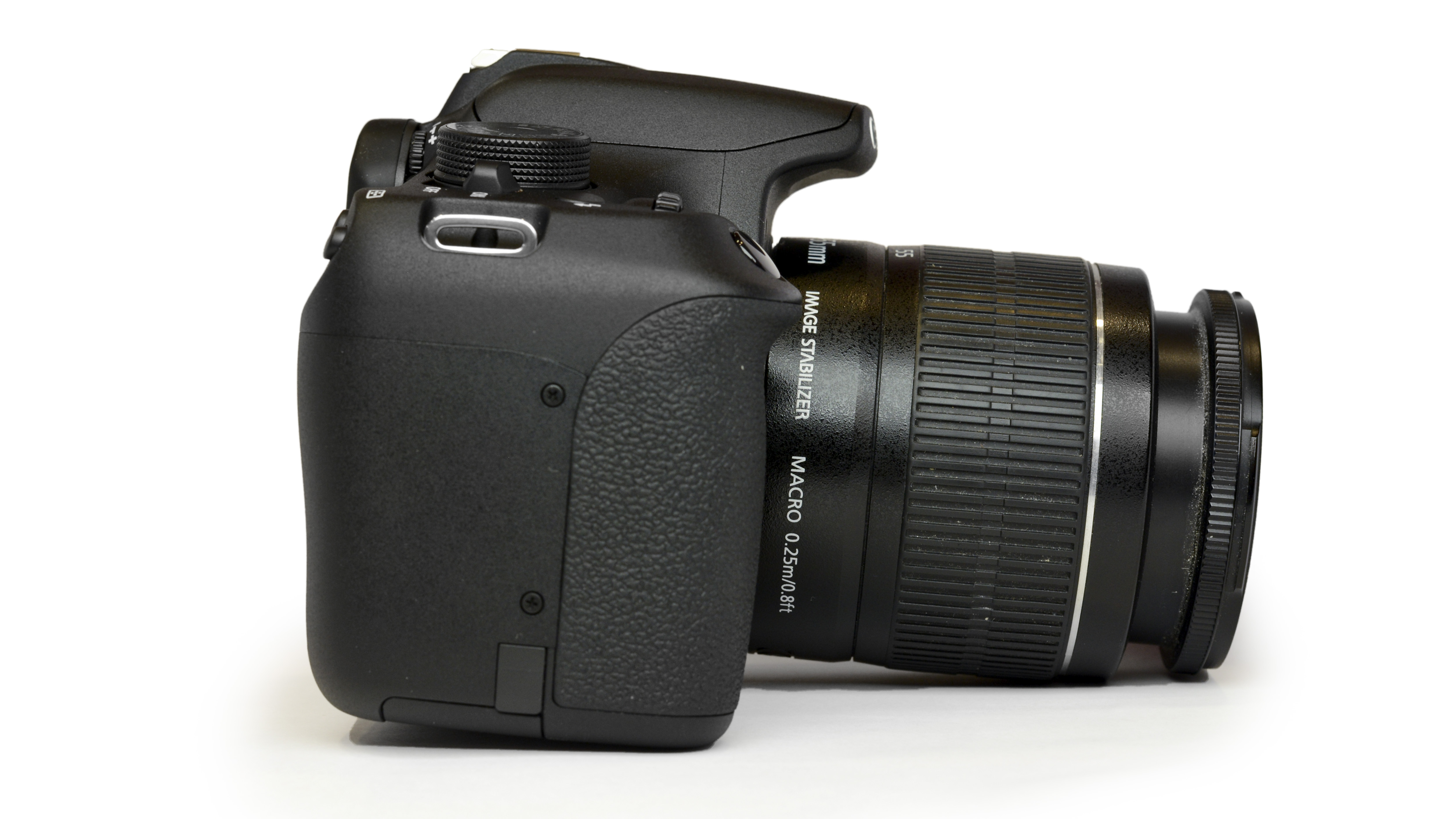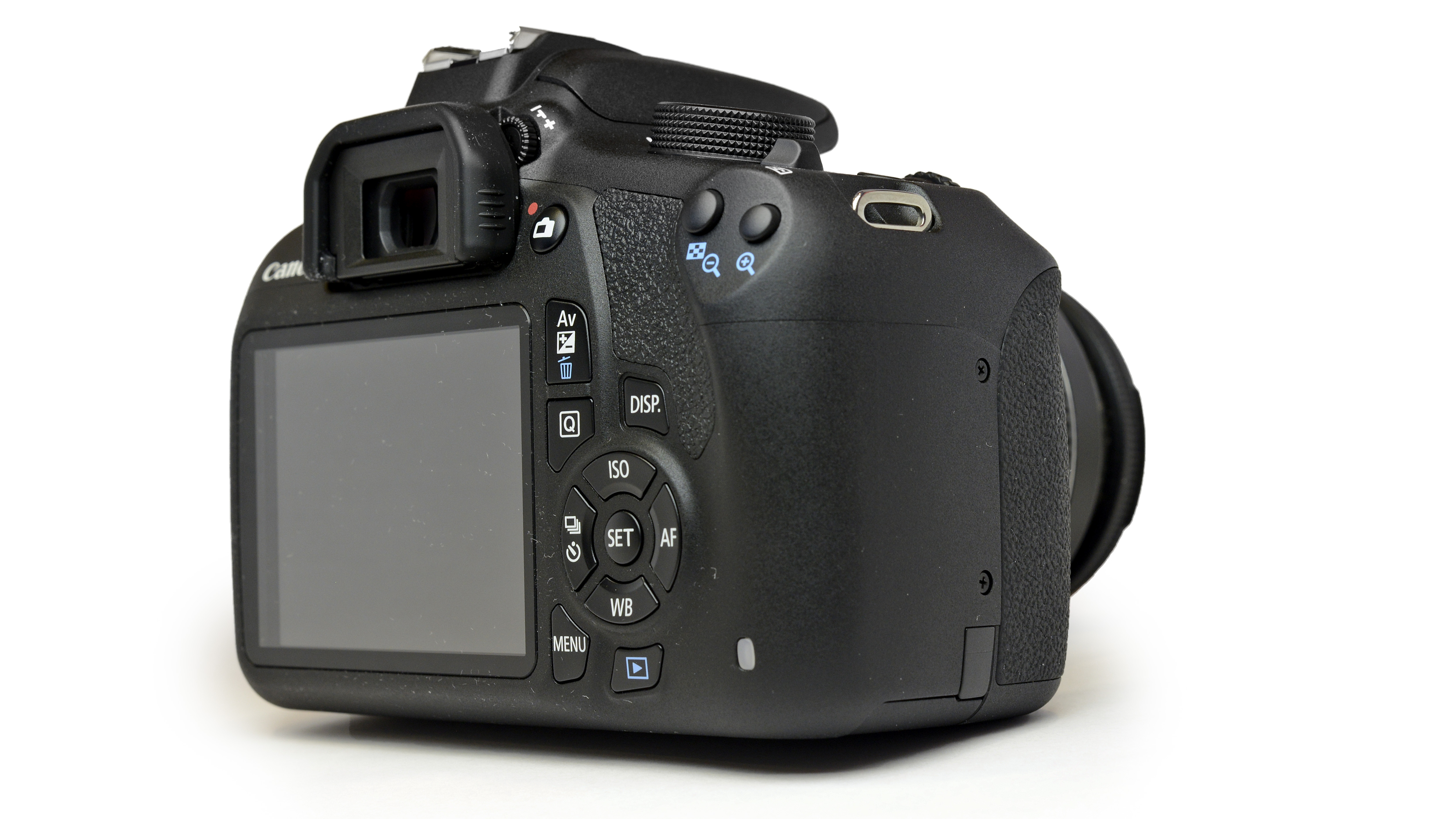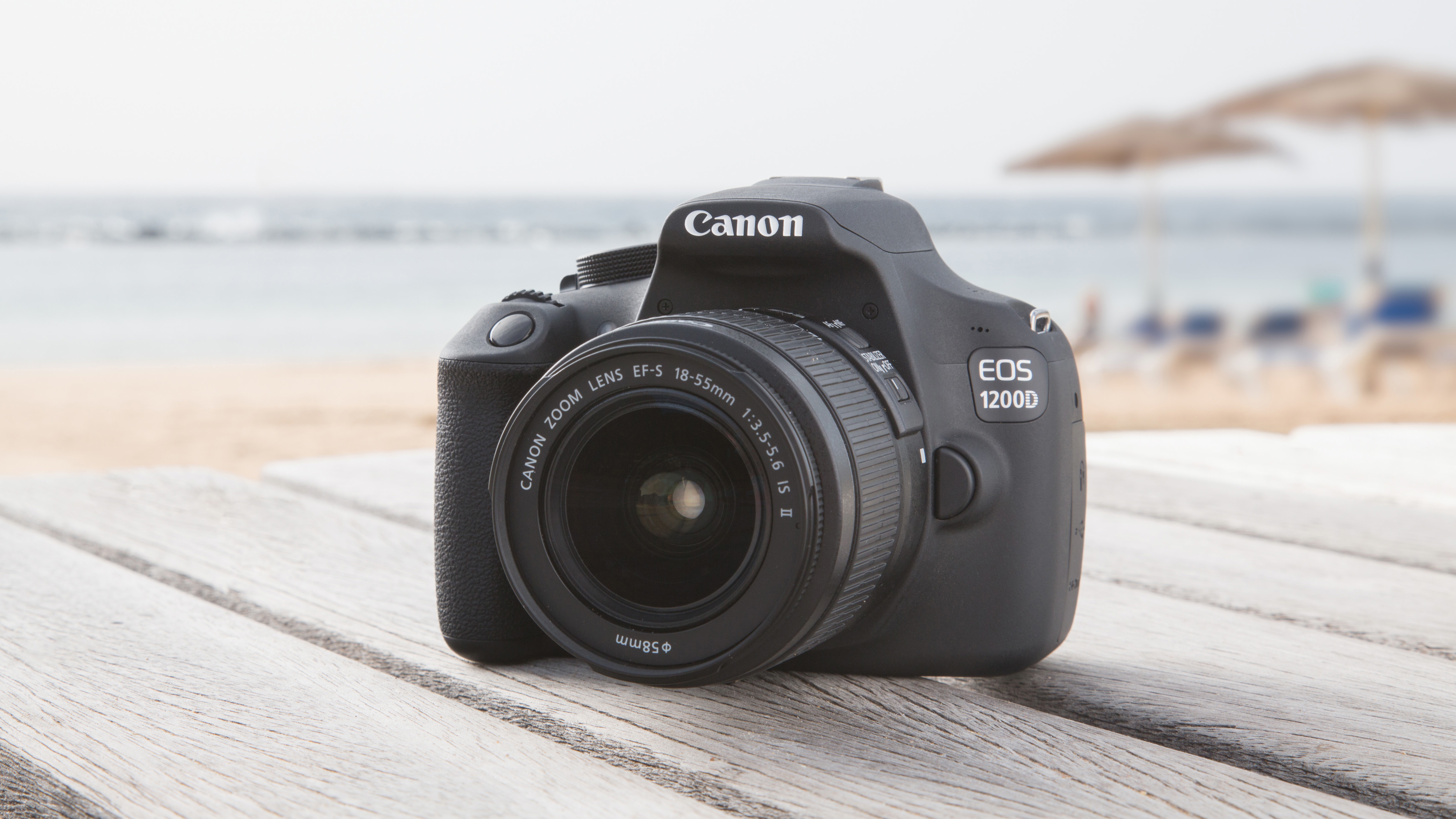Why you can trust TechRadar
Canon has given the 1200D an improved look and feel when you compare it with the 1100D it replaces, bringing it more in line with something like the 700D, which sits ahead of it in the line-up. The deep grip and textured coating give it a feel of quality and also make it easy to hold – even in one-handed use, if you feel so inclined.
There's no touchscreen on the 1200D, unlike some of the other DSLRs in Canon's range (including the 100D and the 700D), so all camera controls are accessed via physical buttons.
Despite it being an entry-level model, there are still a decent number of those buttons on the back of the camera, including dedicated buttons for white balance and sensitivity (ISO).

As with all Canon DSLRs, there is a mode dial on top of the camera to enable quick changes between the different shooting modes on offer. There's a lot of choice on this dial, including the standard P/A(Av)/S(Tv)/M modes, as well as fully automatic and various scene modes.
Unlike the 100D, you need to set the mode dial on the 1200D to video in order to enable recording. The Live View button on the back of the camera can then be used to start a recording.
Pressing a button labelled Q allows you to quickly scroll through 12 different settings displayed on the screen and change them using the dial. So, for instance, you can navigate to the metering setting, then scroll with the dial to change from general purpose to spot metering. It's quicker than diving into the main menu all the time, speeding up the general workflow of the camera.
To change the autofocus point (there are nine available) you will need to press a dedicated button and use the four-way navigational pad to move to the point you need. As there aren't dozens of points, this is a relatively quick process, but you can always focus and recompose if you're in a hurry.
Sign up for breaking news, reviews, opinion, top tech deals, and more.

A dial on top of the camera's grip is used to alter aperture or shutter speed, depending on the mode you're shooting in. To alter exposure compensation, hold down a dedicated button on the back of the camera and use the scrolling dial to dial in positive or negative compensation. If you're shooting in manual mode, the exposure compensation button enables you to switch between using the dial for aperture or shutter speed.
There's not too much in the way of creative options to be found on the 1200D – there's no panoramic mode such as you'll find on the D3300 – but you can experiment with Picture Styles before shooting. A number of presets are modifiable, such as Landscape and Monochrome, in which you can up the contrast, for example. The benefit here is that you can shoot in raw format to keep a 'clean' version of the image, should you need it later.
You can also edit photos in-camera with certain filter effects. These are fun to experiment with, and as they're applied after the photo has been taken, you'll have the original version of the file too.

Some will prefer optical viewfinders to electronic. The 1200D's optical one is bright and clear, although it only offers a 95% field of view, which can be problematic when composing images. Something crept into the frame on more than one occasion that we hadn't noticed in composition, so that's something to watch out for. This is also true of the Nikon D3330, though.
If you prefer, you can shoot in Live View, which offers a 100% field of view via the LCD screen on the back of the camera. If shooting in Live View, you can use the directional keys to move around the screen to the point you need to set autofocus.
Anyone who has ever used a Canon DSLR before will easily be at home here, while those who haven't shouldn't find it too difficult to pick up and get the most from it. In terms of the user interface, Canon hasn't made any radical changes from its previous cameras – it's pretty much identical to the 1100D. While it's a straightforward and easy to read display, it could be argued that it looks a little old fashioned compared with the full colour offering from the Nikon D3300.

Amy has been writing about cameras, photography and associated tech since 2009. Amy was once part of the photography testing team for Future Publishing working across TechRadar, Digital Camera, PhotoPlus, N Photo and Photography Week. For her photography, she has won awards and has been exhibited. She often partakes in unusual projects - including one intense year where she used a different camera every single day. Amy is currently the Features Editor at Amateur Photographer magazine, and in her increasingly little spare time works across a number of high-profile publications including Wired, Stuff, Digital Camera World, Expert Reviews, and just a little off-tangent, PetsRadar.
